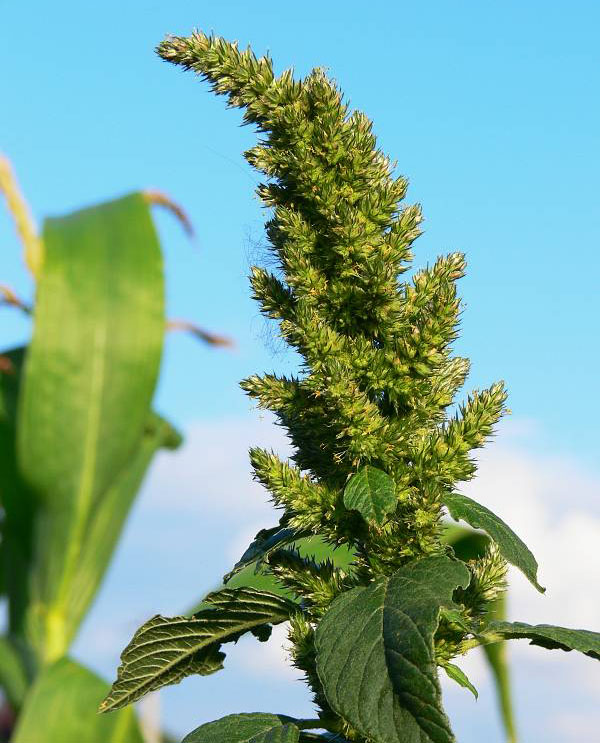
Agricultural News
Herbicide Management Essential in Drought Conditions
Fri, 30 Sep 2011 14:47:00 CDT
 As if to add insult to injury, drought conditions make weed control even more challenging and important than usual. Weeds compete for light, nutrients, space and, most importantly during a drought, water. Since water is already limiting, the tolerance for competition is less, and our economic threshold for controlling weeds may be lower, according to James Locke with the Noble Foundation. While tillage or other cultural practices may be useful, this article will only address the effect of drought on herbicides, particularly with respect to small grains or winter pasture.
As if to add insult to injury, drought conditions make weed control even more challenging and important than usual. Weeds compete for light, nutrients, space and, most importantly during a drought, water. Since water is already limiting, the tolerance for competition is less, and our economic threshold for controlling weeds may be lower, according to James Locke with the Noble Foundation. While tillage or other cultural practices may be useful, this article will only address the effect of drought on herbicides, particularly with respect to small grains or winter pasture.
The first consideration is to determine which herbicides have already been applied to the previous crop or pasture. Factors affecting herbicide breakdown include soil pH, moisture, temperature and micro-organism activity. During a drought, soils are dry and microbial activity is low, which can lead to some herbicides persisting longer than normal. Although herbicide labels include acceptable rotation intervals between herbicide application and planting, these intervals are based on normal conditions and may not be representative during a drought.
If concern exists about extended herbicide carryover, a bioassay may be used. To conduct a field bioassay, plant a strip of either the rotational crop or something more sensitive to the suspected herbicide several weeks prior to planting the production crop. By monitoring the growth of this test strip, we can get a good idea of the herbicide carryover risk prior to planting the entire field. Two major drawbacks to field bio-assays are the need to plant them well before the target crop so that growth can be monitored and that rainfall is necessary for the test plants to grow. Alternatively, collect soils from the top 4 inches in several locations in the field and put into clean plastic trays. Plant the rotational crop in the trays, gently water and monitor the plants' growth for emergence problems and herbicide injury. This method is not as representative as a field bioassay, but does allow control of the environmental factors that could cause a field bioassay to fail.
The second consideration is activation of preemergence herbicides. In order for preemergence herbicides to work, they must be moved into the soil by either rainfall or sprinkler irrigation. The maximum allowable period of time between application and activation varies with the herbicide. In general, the sooner the herbicide is activated after application, the better. Rainfall or irrigation needs to wet the soil 2 to 3 inches deep for herbicide activation.
The third and most common consideration is reduced efficacy of postemergence herbicides on established weeds. Drought stressed weeds usually develop thick, waxy cuticles on their leaves to help conserve moisture. This thick, waxy cuticle acts as a physical barrier and reduces the amount of herbicide absorbed into the leaves. This physical barrier can be overcome to some degree by use of a high quality, nonionic surfactant, crop oil concentrate, methylated seed oil or nitrogen-based additive (like sprayable ammonium sulfate). Applying herbicide rates at the upper end of the labeled rate range also improves control of drought stressed weeds. This increases the herbicide concentration in each individual spray droplet, allowing more herbicide to penetrate the cuticle and enter the leaf. Finally, many herbicides' site of activity within the plant is at the growing point or in actively growing tissue. Weeds under drought stress are generally not actively growing, so control is often significantly reduced.
Accurate sprayer calibration is always important for spraying herbicides, but may be even more so when spraying drought stressed plants. Since the maximum herbicide rates and expensive adjuvants or additives are being used, it is vital to avoid overapplication. An overapplication will not only waste money, but may result in excessive crop injury or illegal pesticide residues. Additional information on sprayer calibration can be found by clicking here, and sprayer calibration calculators can be found by clicking here.
So while weed management during a drought presents many challenges, herbicides continue to be viable tools. When used in conjunction with proper fertilization and grazing, the effects of drought can be at least partially mitigated with a well planned and executed weed management program.
Our thanks to James Locke, Ag Consultant with the Noble Foundation, for this article on herbicide management during drought. This article was sent out as part of the Noble Foundation Ag News and Views for October 2011.
WebReadyTM Powered by WireReady® NSI
Top Agricultural News
More Headlines...




















